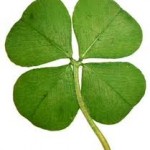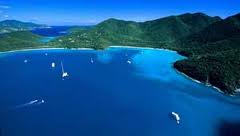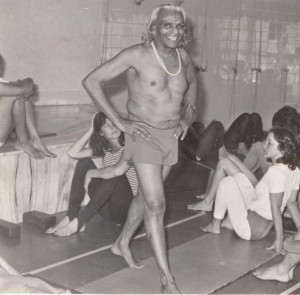Maho Bay Yoga, March 3 – 10, 2013
(Next year at Estate Concordia, St. John, March 2 – 9, 2014)
Preliminary: Read “The Way of Liberation” by Adyashanti
Monday AM: 1st chakra, basic postures and energy lines of the week
1. opening meditation/invocation
2. Tadasana; activate feet, hips, circularize energies: add forward flexion, (uttanasana, prasarita padottanasana) adding tail to counter balance rest of spine. Find the Deep Front Line (DFL).
3. Skaters move to activate inner back leg through inner heel. Use a blanket or towel to slide more freely.
4. Begin trikonasana from same action, like on inner edge of ski or skate, so inner back leg is dominant action. Oscillate in and out, narrow range if necessary to find center point of balance.
5. Add parsvakonasana without losing trikon action. Now double action, bifurcating groins elastically. Repeat, in and out, up and down. Move in and out of pose smoothly, elegantly. Make whatever subtle alignment adjustments necessary to help ease of flow.
6. Add ardha chandrasana to sustain double action plus balance. Don’t lift leg from outside but let it elongate from within, without losing continuous extension, through weight shift.
7. Add parvrtta ardha chandrasana to find rotation. Sustain all other lines of action while pelvis rotates. Keep head and hands quiet so they don’t try to help.
8. In either moon pose find navicular and cuboid bones and stabilize and stay. Then repeat while moving in and out of the moon poses.
9. Find navicular and cuboid in other standing balances, tree, baby natarajasana, etc.
10. Down dog. Grow a tail to lengthen backwards. Don’t use chest or knees. Add one leg elongating and lifting. Like ardha chandrasana, grow longer through whole body.
11. Flip the dog by elongation out through hands finger, and head/ears/eyes, maintain double action to keep continuous flow.
12. Add contra-lateral dog, pigeon and lunge to discover same support of elongation and balance.
13. Head balance and sarvangasana, with variations (if practicing); if not then viparita karani, happy baby, variations on setu bhanda.
14. Savasana
15. Project for the day: find a tail in nature that speaks to you: fish, lizard, iguana, bird. Feel it, move with it.
Monday PM: Connecting inner groins to feet:
1. Questions on “WOL” Introduction”?
2. Lying on floor, feet to wall/railing, in a squatting position. Extend a line of energy from depth of inner groin through inner heel and beyond. Alternate sides, then both together.
3. Then same action in center of room, extending from groin to heel to lengthen leg, being careful not to active quad. Alternate legs, experiment with angles, then add deeper actions to open inner thighs and hamstrings.
4. When legs are long, come to lying half lotus and now extend from groin out through knee to open hips further. Change sides. If you can do lotus, do both legs at saw time. Be careful not to over arch lower back as the iliacus might not lengthen.
5. Return to first position and now extend from sides of diaphragm to inner heels. Feel that the feet are the roots of the diaphragm. Strengthen the energetic links.
6. Now add expansion of ribs. On inhalation, use hands to limit the movement of the lower ribs (the ribs attached to the diaphragm) so the bulk of the expansion takes place in the ribs above the diaphragm. On the exhalation, sustain the open ribs and let the exhalation come from an elongation of the inner /under part of the diaphragm as it rises up inside the chest walls.
7. Savasana: Let the breath find a new place of balance and ease.
Tuesday AM: 2nd Chakra, Sacral Area, Element Water
1. opening meditation/invocation
2. Tadasana, relax and open energy channels through legs and core.
3. Wide dog, openning groins, growing tail. Then in wide dog, add groin extension from Monday pm class, one leg at a time, inner groin extending to inner heel, back and forth.
4. Then, in wide dog, cross connect inner heel to opposite illium to begin to open sacro-illiac joints, differentiating illia from sacrum.
5. Then in uttanasana, lift one leg, bend knee, extend from groin to heel backwards, like half moon. Then extend from inside of illium out through inner heel to open sacrum
6. Then, trikonasana, finding first hip joint, then sacroiliacs of both front and back legs.
7. Same in parsvakonasana, VIra II, ardha chandrasana. Explore using railing for support in ardha chandrasana.
8. Down dog and variations, extending from illia.
9. Head and shoulder balance or viparita karani.
10. Savasana.
Tuesday PM: inner pelvis to feet and diaphragm
1. Questions on “WOL” Five Foundations”?
2. Anatomy exposition on i-pad. Find deep front line from feet to diaphragm. See the many layers from surface to interior. (Thanks to Stacy!)
3. Pelvis on block, knees bent, feet lifted. Raise and lower feet without having illiacus shorten, one foot at a time if necessary. Try with leg straight. Double action through center of pelvis creates more space for breath. Try without block.
4. Bridge pose, feet at whatever height necessary for spinal release. Connect diaphragm to feet, lift and open chest from the inside.
5. Breathing practice: expand upper ribs, resist lower ribs to keep diaphragmatic length to feet.
6. Savasana
Wednesday AM: 3rd Chakra: Fire
1. opening meditation/invocation
2. Jelly fish action. Begin in hands and feet. Tadasana, feel dropping and spreading (feminine) followed by gathering in and lifting (masculine) through arches.
3. Create same action in uttanasana, widening and spreading to go down, gathering and lifting to come up. Find out how you can use w/s to lengthen legs in uttanasana, not from quads!
4. Squatting: feel widening and spreading, g/l, as you go up and down.
5. Cat/dog stretch, working just the pelvic floor to create a pumping action. Then trikon, parsvakon, ardha chan, all from pelvic action.
6. Down dog, flipping dog, opening third chakra area through extension of core.
7. Sphinx, cobra, bent leg cobra on rails with lift, ustrasana (head on railing), salabhasana, dhanurasana, and any other back bending pose that inspires. Keep the lift coming up the inside, keep the grounding energies open.
8. Uttana padasana or fish pose, or variations
9. Lying twist (or any other)
10. Savasana
Wednesday PM:
1. Questions on “WOL” Three Orienting Ideas”?
2. Anatomy: Diaphragm- size, shape location.
3. Lying down, find elongation through legs and pelvic floor. Start with feet on floor, then bring knees to chest without losing extension. Then extend knees slightly keeping pelvic action.
4. Slowly extend legs further, coming into urdhav prasarita padasana and/or urdhva pascimottanasana. Keep chest/upper body relaxed and open. Move from core.
5. Then, place block or roll under pelvis to improve leverage, repeat above actions.
6. Then, with one leg in flexion, slowly extend opposite in wide circular arc to eka pada seth bandha. Repeat on other side. Go back and forth.
7. Then, create a side ways circle with each leg, watching where rotation of the leg happens. explore this on both sides.
8. Breathing: Widen ribs, sustain as long as possible during exhalation to deepen lift of diaphragm. Explore 3rd chakra region under diaphragm, including liver, kidneys, stomach, pancreas, transverse colon, keeping organ spaces wide and awake.
9. Savasana
Thursday AM: 4th Chakra, ribs above the diaphragm, shoulders, hands, arms
1. opening meditation/invocation
2. Tadasana, prasarita padottanasana, trikonasana, parsvakonasana, ardha chandrasana…(review of first three days)
3. Standing twist on the rail (throwing the frisbee) integrating feet to hands in spiral through core. Feel coiling and uncoiling, not hyper-extension anywhere along the circuit.  Four leaf clover image for 4 quadrants of chest/lungs/shoulders.
Four leaf clover image for 4 quadrants of chest/lungs/shoulders.
4. Hands and wrists inquiry: how to keep carpal tunnel clear, tendons into the bones at the wrist, wrist bones floating evenly.
5. Downdog, watch wrists, keep open. Add the flip to extend and integrate core. Balance front and back lungs.
6. Starfish pose, multiple vectors to open all directions. (variation of parvrtta parsvakonasana)
7. eka pada koundinyasana, bakasana, jumping back to chaturanga dandasana.
8. Head and Shoulder balance/viparita karani
9. Savasana
Side Bar: We can find some ‘loose’ analogies between the middle chakras, 2,3 and 4 with both Ayurveda and embryology. (Don’t get too literal, but this can be helpful to feel some connections. 2nd chakra, water element, kapha dosa (has some earth), and the endoderm or gut body. 3rd chakra, fire element, pitta dosha and the mesoderm or structural body. 4th chakra, air element (has some akasha), ectoderm or nervous system. I Ayurveda, these are the mutable elements. In embryology, these ‘derms’ define the first cellular differentiation and thus can be seen as three primary intelligences in somatic enquiry. And they are the chakras most connected to the larger movements of the body.
Thursday PM: more shoulders and arms.
1. Questions on “WOL” Meditation”?
2. Anatomy of shoulder blade, especially subscapularis and serratus anterior, to find analogies with pelvic bones. Notice inside of scapula is behind ribs!
3. Explore shoulder blade collar bone connection at ac joint: Lying down, extend arms straight up to ceiling. Lift from clavs, drop from scaps. From there rotate arms in circles, staying below the neck at first (out to side for circles). Then add over head..
4. Standing frisbee throw. Track sequence of movements/sensation to learn integrated action.
5. Limb-nation: Caryn’s exploration of sequentially letting go of each joint from finger tips to sternum, one arm at a time. Four sections, pair of partners.
6. Savasana
Friday AM: 5th Chakra: Throat/Neck
1. Opening invocation: Bring Mother Earth to each chakra, each chakra to mother Earth. Bring Father Sky/Heavens to each chakra, each chakra to Father Sky.
2. Spheres of awareness/sensitivity/energy flow, like snow man. Chakras 1,2, lower sphere, 3 and 4, middle sphere, 5 and 6: upper sphere. Differentiate each and balance.
3.  Find the sinusoidal connections linking front to back and side to side.
Find the sinusoidal connections linking front to back and side to side.
4. Using vowel sounds to relax throat and neck. A, O E, and diphthongs AO, AE. Explore mouthing as instinctive action of throat, like a fish or deer feeding.
5. Lying on floor, find skull bones, adjust carefully. By swallowing, find where trachea and esophagus separate. Feel front and back of throat. Open that space. Try in sitting.
6. Then tadasana and uttanasana. What happens to the spheres? Keep them open.
7. Same in trikonasana, parsva, ardha chan, finding inner most energy channels to move neck/skull. Minimize outer movements, deepen awareness.
8. Down dog to tip the dog. open neck, throat and inner skull.
9. Headbalance, shoulder balance, viparita karani
10. Savasana
Friday PM: Mouthing as initiator of action.
1. Questions on “WOL”Inquiry”? Other questions?
2. Lying on floor, find wave down through feet and pelvic floor rebounding back to open jaws, mouth. Feel it as a rising that expands as it enters the lower pharynx and emerges.
3. If that is tricky, try as the standing spiral, but instead of throwing the frisbee, throw ‘your voice’ up and out into space. Use ‘ah’, ‘ooo’, wow, or any other vowely sounds. then orient to the food outside, like the turtles and fish as they feed. Compare left and right sides.
4. Then feel the rising as sound. Give it a ‘wow’ sound to mimic the shape.
5. What happens in uttanasana when you try the same action? Where does it get stuck?
6. Breathing: Lying in a comfortable position, trace breath from nostrils through throat and onto diaphragm. Feel how it passes through the throat. What parts of the diaphragm are touched by the breath, on right, on left? On front, on back? 5 – 10 minute enquiry.
7. Now compare that sensation to the rising sounds and mouthing. Can you differentiate the esophagus and trachea? Mouthing involves the esophagus, breathing does not. In breathing, can you have the same spaciousness in and around the esophagus as you do when mouthing, with out opening the esophagus? How does that affect the diaphragm? Explore again.
8. Then, feel the breath as it touches the lining of the nostrils. On the in breath, let the breath widen to touch the outer nostrils. On the exhalation, let the breath narrow to touch the septum. How does this affect the throat, the diaphragm?
9. Savasana: Rest in spacious emptiness.
Saturday AM: 6th Chakra: mid brain, corpus collosum, inner ears.
1. Opening meditation: Tune into the sound-scape. By surrounded by sound. Feel it coming from all directions. Let your whole body listen/hear. Let your ears by like deer ears. or bigger! Let the expand and move, without turning your head or using the neck muscles. Let the right ear get even bigger and rest in the right ear. Feel the space. Then the left ear. Then both ears. Imagine the skull bones expanding to receive the sounds. Balance right and left. Feel the whole body receptive.
2. Tadasana, uttanasana, prasarita padottanasana, all feeling the inner ears, skull bones. If the groin pressure backs up, notice how that pressurizes the head/brain, sinuses/eyes/ears. Release the apana vayu into floor/space through lower chakras. Feel the freedom in the upper chakras. Don’t let the chest collapse. That will also pressurize the skull etc. Elongate as you move in and out. Don’t go past the point of collapse or contract. Stay in balance, in flow.
3. From Prasarita Padottanasana, enter into trikonasana, parsva, ardha, staying low, not coming up between sides. (Australian version!)
4. Then, from PP, parsvottanasan, parvrtta trikon, parvrtta ardha chandrasana, parvrtta parsvakonasana. Follow flow, balance the energies.
5. Down dog, flipping dog and variations (contra-lateral, pigeon, lunge). Maximize opening in throat and interior of skull. Open crown chakra to complete action.
6. Sphinx pose from mouthing, then inner ears. Compare. Not from spinal muscles. Don’t go too far into pose or you will lose inner awareness.
7. Head balance/shoulder balance or viparita karani, or any pose your intuition suggests.
8. Lying twist
9. Savasana.
Sat PM: 7th Chakra and Integration
1. Questions on “WOL”Contemplation” and conclusion”? Other questions?
2. Lying on floor, feet to wall/railing, in a squatting position. Extend a line of energy from depth of inner groin through inner heel and beyond. Alternate sides, then both together. (from day 1)
3. Center of room, extend legs from whole inner body, in all directions.
4. Raise pelvis on block, extend legs. Then ground feet, open chest, opening diaphragm, ribs, spine.
5. Seated twist of choice. Let body decide which side to begin. Assume basic position without effort or strain. Then:
 Find first chakra. ask which direction it wants to rotate and let it go. When the movement is complete, invite the opposite rotation. Let the flow pendulate back and forth between clockwise and counter clock wise. Then let the two find a balance. Then
Find first chakra. ask which direction it wants to rotate and let it go. When the movement is complete, invite the opposite rotation. Let the flow pendulate back and forth between clockwise and counter clock wise. Then let the two find a balance. Then
Move to 2nd chakra. Keeping first chakra awake and relaxed, repeat as above.
Repeat for all 7 chakras.
Repeat whole cycle for side two.
6. Savasana



